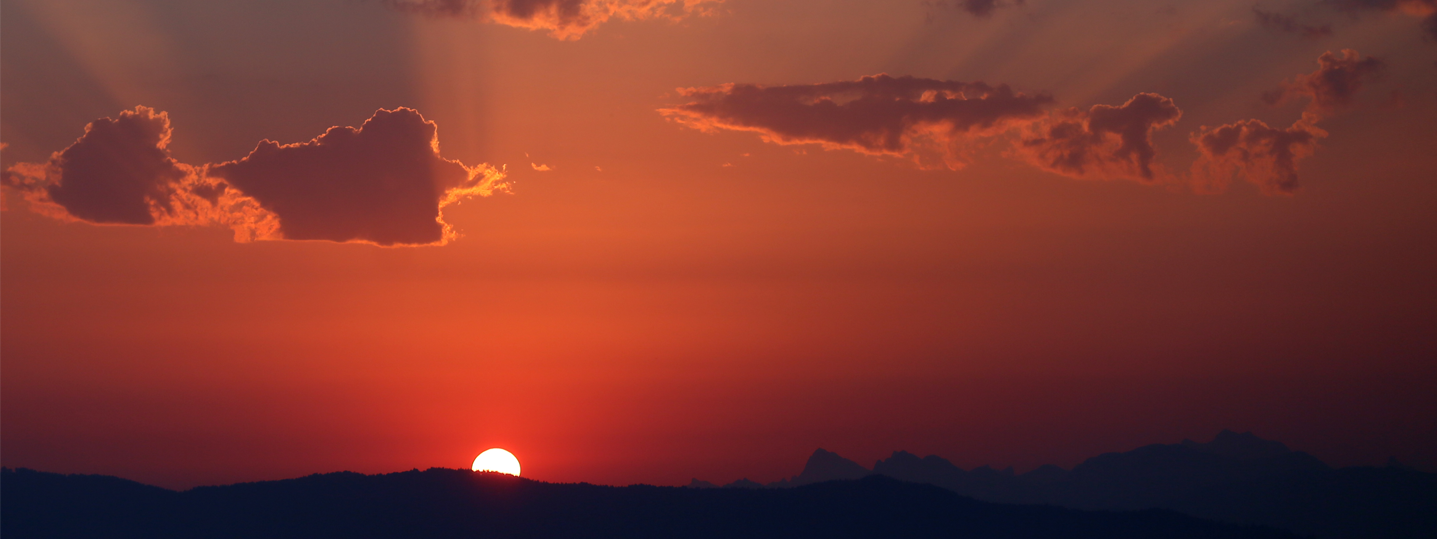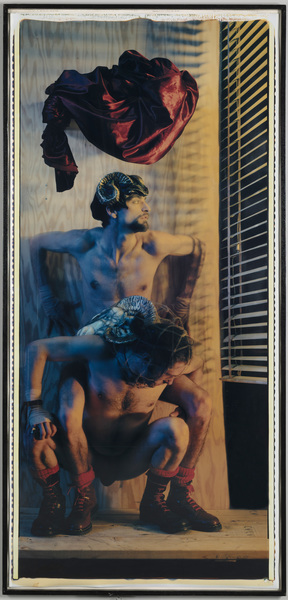The Musée national des Beaux-Arts in Québec City will be presenting this fall the long-awaited retrospective of the seminal Canadian artist Evergon, born Albert Jay Lunt in 1946 in Niagara Falls, Ontario. This major exhibition will span his entire career, from 1971 to the present, with a view to shedding contemporary light on the artist’s long-term output. More than 200 works will be assembled for the first time to highlight this colourful individual and his multifaceted work.
Evergon is regarded as a genuine cultural icon in Canada. He is an artistic and social pioneer who focuses on contemporary questions concerning cultural and body diversity and diversity of identity. For nearly 50 years, the artist’s career has centred on bold photographic, technological, and aesthetic research. His always moving and occasionally irreverent striking imagery is often an extension of classical painting. The simultaneously political and sensualistic nature of his work raises questions on sexual orientation. He revisits with rare vitality genres such as portraits, landscapes, or nudes. Through collages, the art of photocopy and an entire array of exploratory photographic approaches, including the Polaroid, Evergon deepens the terms of queer masculine and feminine identity, thereby shaking up fixed ideas.
Numerous striking works underpin Evergon’s career, in particular the immense colour Polaroids from the 1980s, for which he is internationally recognized. Critics and several artistic institutions in the world have also paid tribute to his award-winning work in holography. His series devoted to his mother Margaret renews the representation of the ageing body as few artists have done and has received widespread recognition. Evergon is an immense creative force: identity, body diversity, love, desire, and ageing are at the root of his work. Like death and life, it is the latter in all its facets that the artist celebrates. Evergon grafts on to life notions of autobiographical fiction and extimity, a revelation of the intimate in the public sphere that is common today but that he explored early in his career. The artist deems all his works to be love letters.
Evergon’s concerns encompass social and artistic issues that go beyond the body’s socially constructed limitations. He thus abandons clichés by representing atypical bodies and goes beyond the canons of standardized beauty while relying on the seductive powers of photography, capable of inventing fictional worlds or theatres as is true of another major series in his career, in which he imagines the life of an entire community, that of the characters the Ramboys. Evergon continues to be in perfect synchronicity with the emancipatory challenges of photography: he has forcefully called into question the notion of the author by creating various alter egos. He disrupts the foundations of the photographic image through an astonishing baroque aesthetic and brushes aside the conventional canons of beauty by representing atypical bodies that he invests with panache.
Travel log

Archive for October 2022
In the estuary of the Restigouche River, at the end of Chaleur Bay, lies the national historic site of the Battle of the Restigouche, 3 km west of the municipality of Pointe-à-la-Croix. This historic site commemorates the last naval battle of the Seven Years' War between the French and English for possession of New France…
But it was also near this site, to the east of Pointe-à-la-Croix, that over a thousand Acadians fleeing deportation took refuge, in what was called in 1758 the village of Petite-Rochelle. At the time of the fall of Quebec in September 1759, the village was only defended by a fortified post and a handful of soldiers. Under the English threat, this Acadian refuge was nevertheless the last French bastion to capitulate. Here's why…
The last naval battle
At the end of May 1760, the Petite-Rochelle post received unexpected aid. The winter had been harsh, and the population had suffered greatly from famine. A French flotilla commanded by Lieutenant François Chenard de La Giraudais took refuge at the end of Chaleur Bay. Comprising the frigate Le Machault and two supply ships loaded to aid Canada, they had preferred to avoid encountering a larger English fleet that preceded them at the entrance of the Saint Lawrence River. On June 27, the three French ships were trapped by an English fleet of five warships commanded by Captain John Byron, who engaged in battle. The defense of the Petite-Rochelle post, however, was organized and supported by Acadian militiamen and Mi'kmaq warriors. François-Gabriel d’Anjeac, captain of the troops aboard the French ships, had taken command of the post and directed the construction of a battery and a guard post at Pointe-à-la-Garde (east of Pointe-à-la-Croix). This battery caused real damage to the English and delayed their progression towards the French ships. But the fight was uneven…
Estuary of the Restigouche River and Van Horne Bridge
Estuary of the Restigouche River and Van Horne Bridge connecting Campbellton to Pointe-à-la-Croix, viewed from Sugarloaf Mountain, New Brunswick. It is here that remains of the Machault still lie at the bottom of the river (author Blob5825, unmodified, license CC BY 1.0)
On July 8, at the end of a fierce battle, La Giraudais scuttled his ships to prevent the English from seizing the supplies and weapons. Quickly, Captain d’Anjeac led the retreat of his troops into the woods. However, the English fleet preferred to withdraw. Thus ended the battle of the Restigouche. The English had burned all the houses they found on the shore. The disaster was total. D’Anjeac still managed to organize the resistance of the Petite-Rochelle post, which still sheltered a thousand Acadian refugees. It was in vain… The French troops had to lay down their arms on October 30, after the capitulation of Montreal. The Acadians were left in place, plunged into great uncertainty, which did not prevent the Acadian privateers from continuing a relentless privateering war against the English boats. Several families had still managed to flee along Chaleur Bay and had founded the village of... Bonaventure.
RSS Feed
SubscribeCategories
Tags
Latest Posts
- Evergon. Theatres of the Intimate
- Seven Years' War between the French and English for possession of New France

